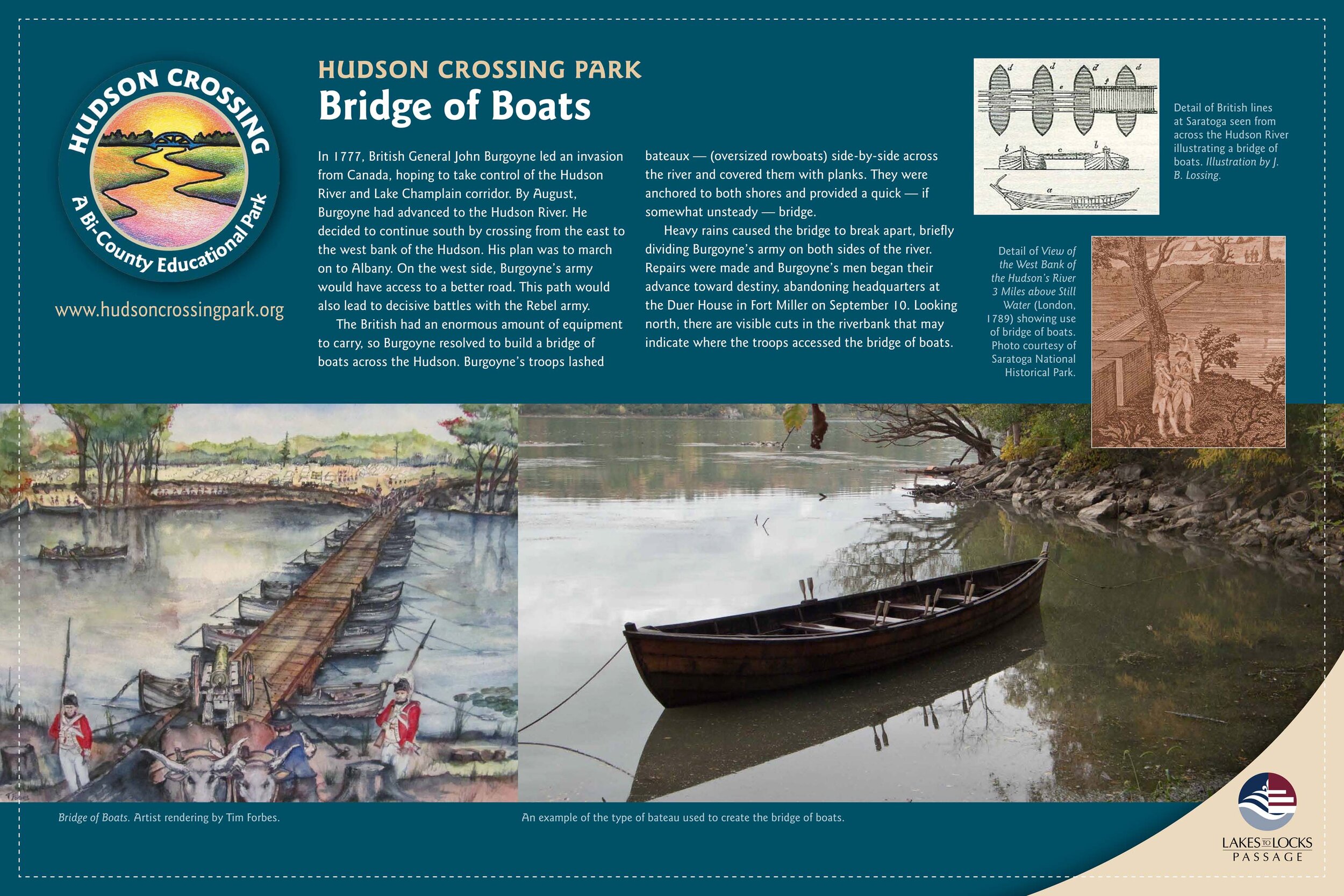The Bridge of Boats
Most often ingenuity is born out of necessity, and "The Bridge of Boats" during the Revolutionary War is no exception.
In the fall of 1777 General John Burgoyne’s army, over 7,000 people strong, found themselves stranded on the east side of the Hudson River unable to cross. Faced with strong currents that washed attempts at traditional bridges away, Lt. John Schank designed a bridge using what was at hand: the military's bateaux, or boats. Schank anchored the bateaux, which measured an impressive 30' long, side by side to create a floating trestle system that spanned the river. Wooden beams were then laid across and planks set to make a roadway for the crossing. Finally, a ramp was constructed to connect the land road to the bridge.
It was thanks to Lt. Shanks ingenuity that the men, camp followers, artillery, animals, and supplies were finally able to cross the Hudson River, only to face defeat at the Battle of Saratoga.
Today, from the Louise Landry Memorial Bridge of Boats Overlook. you can still see the roadbed that was cut into the riverbank and was used by the Burgoyne’s army to approach the Bridge of Boats.





